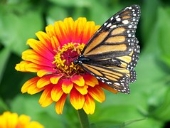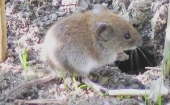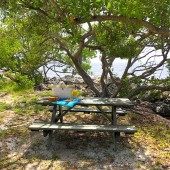
 7
7




Think vertically when planning your hummingbird garden. Use trellises, trees, garden sheds, or other structures to support climbing vines; add window boxes, wooden tubs, or ceramic pots to create a terraced effect and provide growing places for a variety of plants. Select native plants for your garden.
Invasive plants are Earth's way of insisting we notice her medicines. Stephen Herrod Buhner
Everyone learns what works by learning what doesn't work. Stephen Herrod Buhner
 3
3




 6
6




Hollyhock is completely edible – leaves, roots, flowers, seeds – not just an amazing looking flower, common in many cottage gardens. .
Hollyhock is used for pain, stomach ulcers, wound healing, diabetes, and many other conditions

Invasive plants are Earth's way of insisting we notice her medicines. Stephen Herrod Buhner
Everyone learns what works by learning what doesn't work. Stephen Herrod Buhner
 7
7







Invasive plants are Earth's way of insisting we notice her medicines. Stephen Herrod Buhner
Everyone learns what works by learning what doesn't work. Stephen Herrod Buhner
 10
10




Follow some of my adventures in writing here and pick up my cookbook/guide to radio drama Box 13 here
 6
6




 8
8




 7
7




"Nature is not a place to visit. It is home." --Gary Snyder
 4
4




 5
5






"Si hortum in bibliotheca habes, nihil deerit." [If you have a garden and a library, you have everything you need] Marcus Tullius Cicero in Ad Familiares IX, 4, to Varro.
 4
4




echo minarosa wrote:I've planted heavily for them. The good part is, those same plants are also loved by other pollinators so win-win.
I have natives for them like Monarda spp., etc. but also a good many salvias like 'Black & Bloom', 'Black & Blue', 'Hot Lips', 'Roman Red', as well as Salvia coccinea (Texas red sage, and several other names), cosmos, Tithonia (Mexican sunflower), hanging pot fuschias, Cuphea 'Vermillionaire', an armada of various mint family members, a fair number of succulents (that have to hole up in the cellar for the winters), and even some petunias. They REALLY love those salvias. In late summer, when Tithonia blooms, it attracts EVERYTHING. They also hit the numerous other flower resources.
I winter sowed seeds of Ipomopsis rubra (standing cypress). Fingers crossed they will come up.
I also run several sugar water feeders. However, these are really just supplemental as most of the time they are hitting the flowers...especially those all-season flowering salvias. The feeders are changed frequently...when it's really hot (90F+)...almost daily. Feeders are sterilized and await the next cycling.
I've provided a variety of soft items for nesting...dog hair, wool, down, etc.
I thrifted several table top fountains. They don't need a lot of room and prefer REALLY shallow water especially if it trickles and makes noise.
I drilled holes in a ceramic pie plate and hung it with chains tray-style. I put in bananas, peach skins, whatever will ferment, and a small teaspoon or two of beer and molasses. That is a breeding space for vinegar flies. I've seen hummingbirds hover and fly back and forth over it sucking up flies. You can buy a plastic fly feeder on Amazon for around $30 or so.
I've added extra smaller perches all over the place for hummingbirds. They get used.
After seeing online photos and taking to people who had them build nests on wind chimes and other hanging things on covered porches, I added a good many possibilities under each porch roof. No nests but they are also used as perches.
I've planted plants with hairy/woolly bits in case they are needed for nests. Don't know whether they are used.
Anyway, they figure heavily into our pollinator plantings & habitat mods here. We're not swamped with hummingbirds like some of you out west, but ours do well.
It's also been great for sparking gardening interest. Some people might not make an effort for bees, but they might for hummingbirds. Whatever works!
And finally, after seeing one too many examples of the non-native Chinese praying mantises preying on hummingbirds, I've started killing every one I see (not Carolina's which are our natives). After the first two years of killing them, I rarely see them any more. Chinese mantises are huge compared to our natives. I've seen them kill and eat small mammals, lizards, birds, toads, frogs, and even each other.
"Nature is not a place to visit. It is home." --Gary Snyder















"Si hortum in bibliotheca habes, nihil deerit." [If you have a garden and a library, you have everything you need] Marcus Tullius Cicero in Ad Familiares IX, 4, to Varro.
 2
2




 1
1








“We can complain because rose bushes have thorns, or rejoice because thorn bushes have roses.” — Abraham Lincoln
 1
1





|
I found this tiny ad in my shoe
The new purple deck of permaculture playing cards
https://www.kickstarter.com/projects/paulwheaton/garden-cards
|









